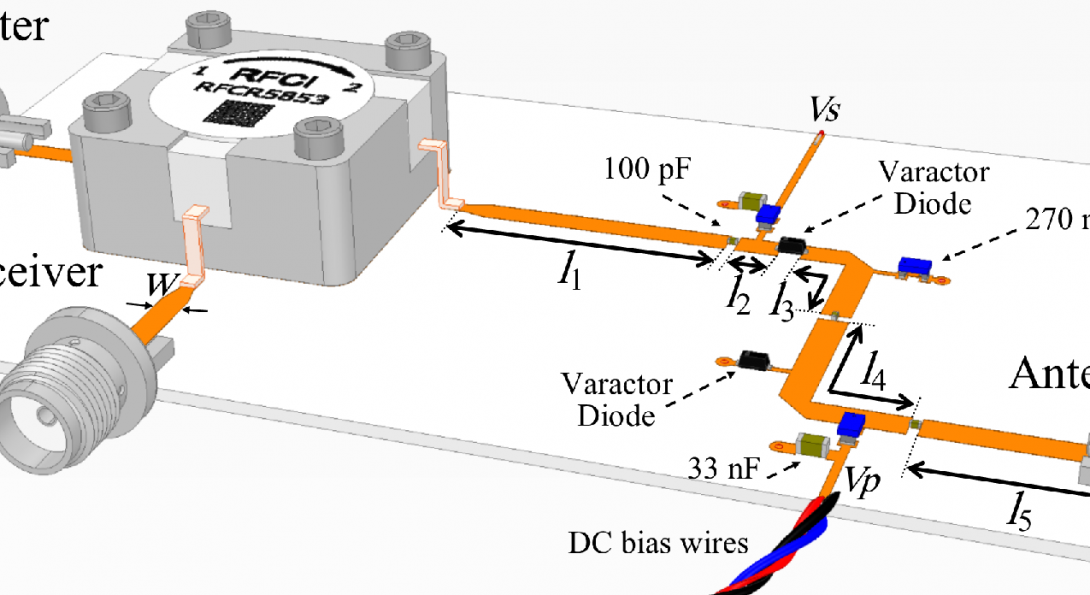Inherent Self-Interference Cancellation (SIC)

1
Sponsors:
Problem Statement and Motivation
- Promoted by the popularity of small cell wireless systems, recent works have provided experimental evidence and methodologies for full-duplex communication.
- We aim to create highly reliable full-duplex wireless networks.
Technical Approach
- We improve full-duplex communication by reducing the self-interference.
- We use the inherent secondary SI signal at the circulator, reflected by the antenna, to cancel the primary SI signal leaked from the Tx port to the Rx port.
Key Achievements and Future Goals
- B. Smida, D. Erricolo, F. Farzami, and S. Khaledian, “Method for self-interference cancellation for in-band full duplex single antenna communication systems,” Provisional Patent led on April 7, 2017.
- S. Khaledian, B. Smida and D. Erricolo, “Robust Self-Interference Cancellation for Microstrip An- tennas by Means of Phase Recongurable Coupler,” IEEE Transactions on Antennas and Propagation vol. 66, no. 10, Oct. 2018.
- S. Khaledian, F. Farzami, B. Smida, D. Erricolo, “Inherent self-interference cancellation for in- band full-duplex single-antenna,” IEEE Transactions on Antennas and Propagation, vol. 66, no. 6, pp. 2842-2850, June 2018.
- S. Khaledian, F. Farzami, B. Smida and D. Erricolo, “Inherent self-interference cancellation at 900 MHz for in-band full-duplex applications,” Proc of IEEE 19th Annual Wireless and Microwave Technology Conference (WAMICON), Clearwater, FL, pp. 1-4, April 2018.
- S. Khaledian, F. Farzami, B. Smida and D. Erricolo, “Inherent self-interference cancellation at 900 MHz for in-band full-duplex applications,” Proc of IEEE 19th Annual Wireless and Microwave Technology Conference (WAMICON), Clearwater, FL, pp. 1-4, April 2018.


